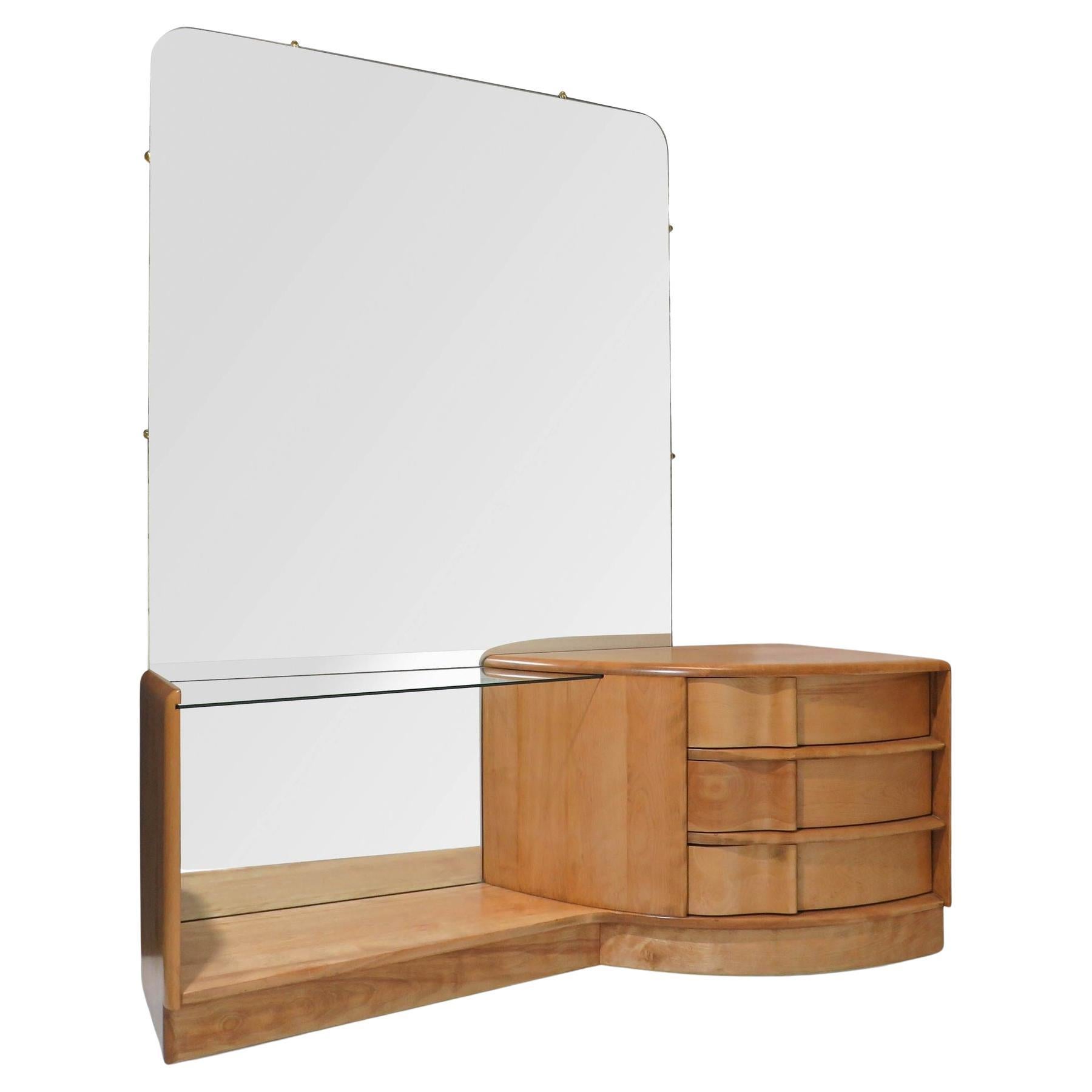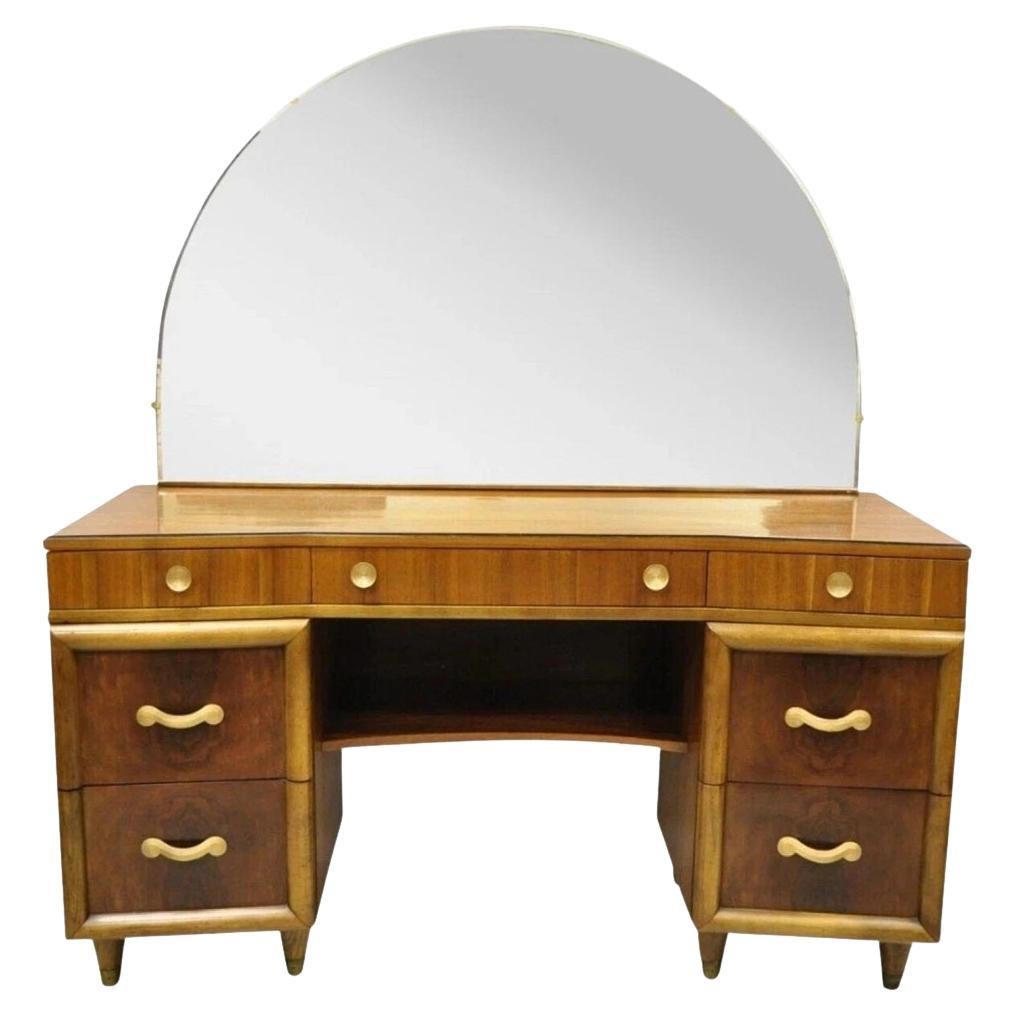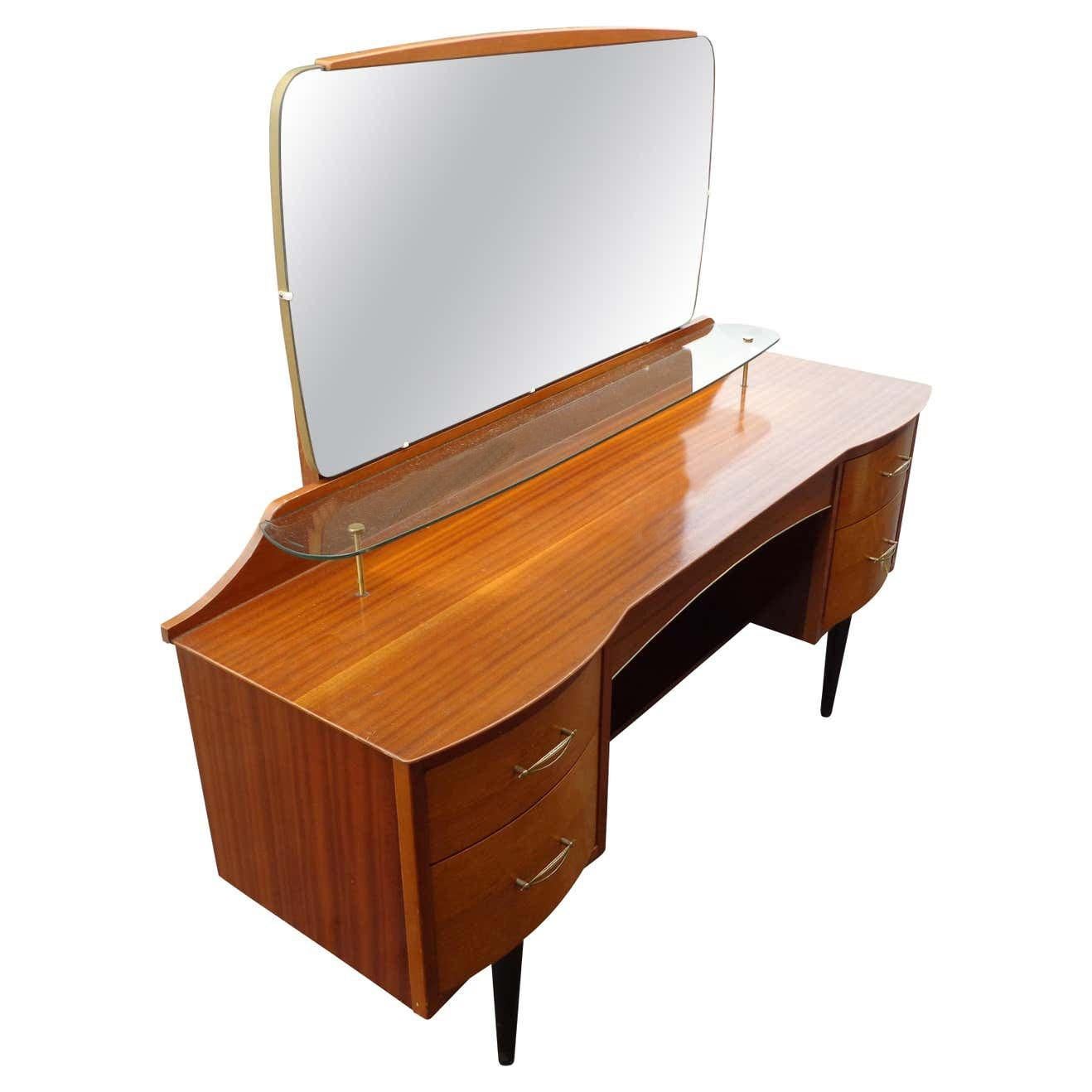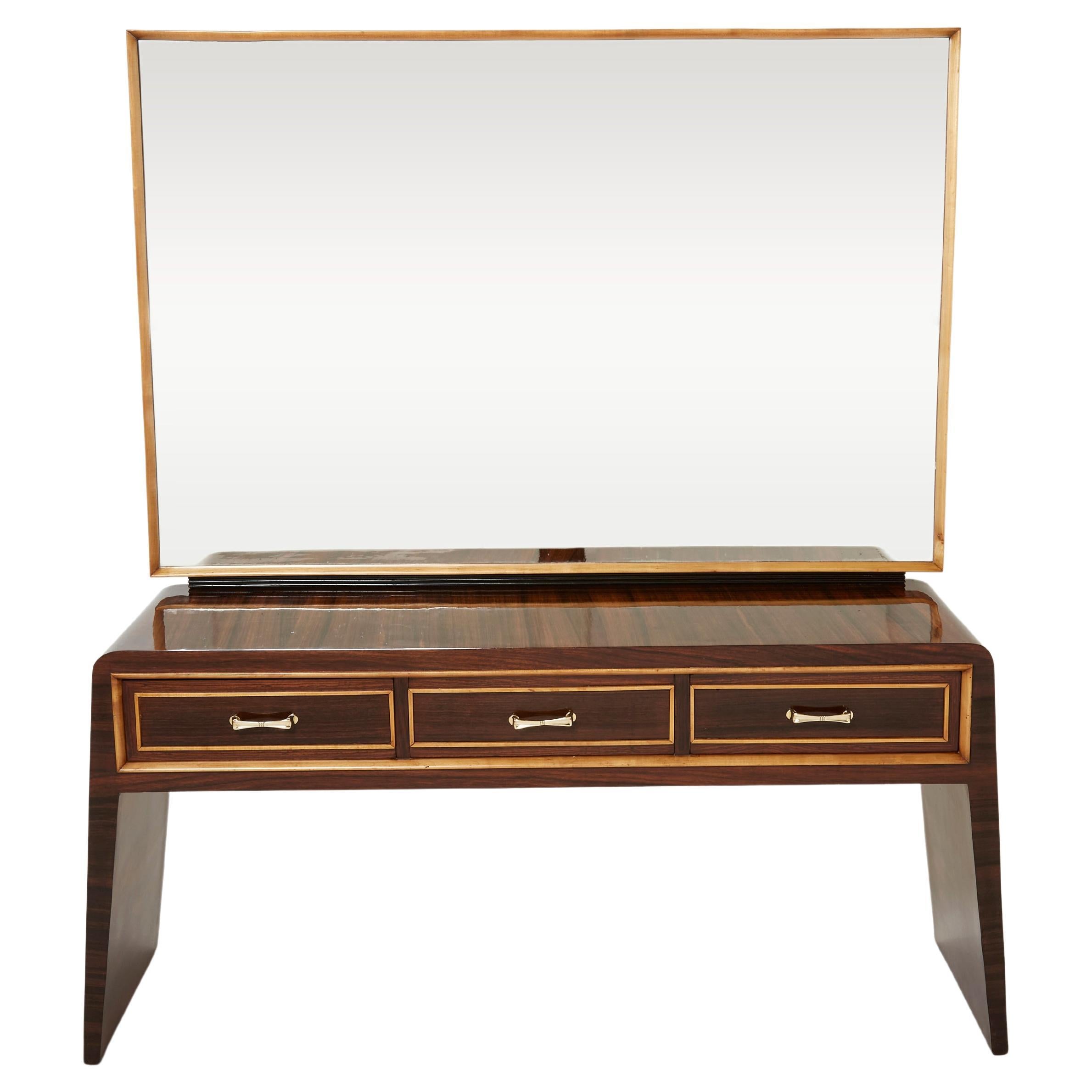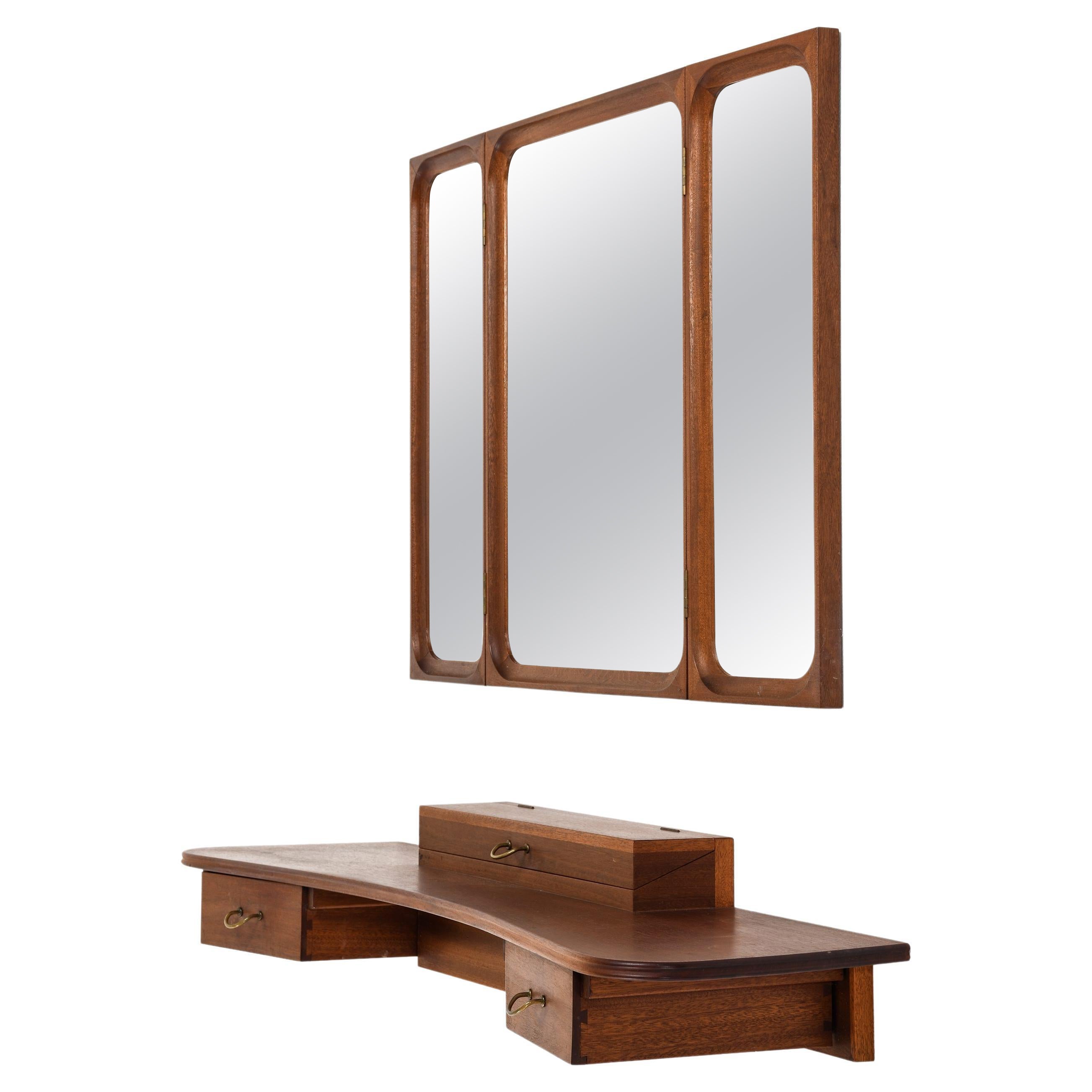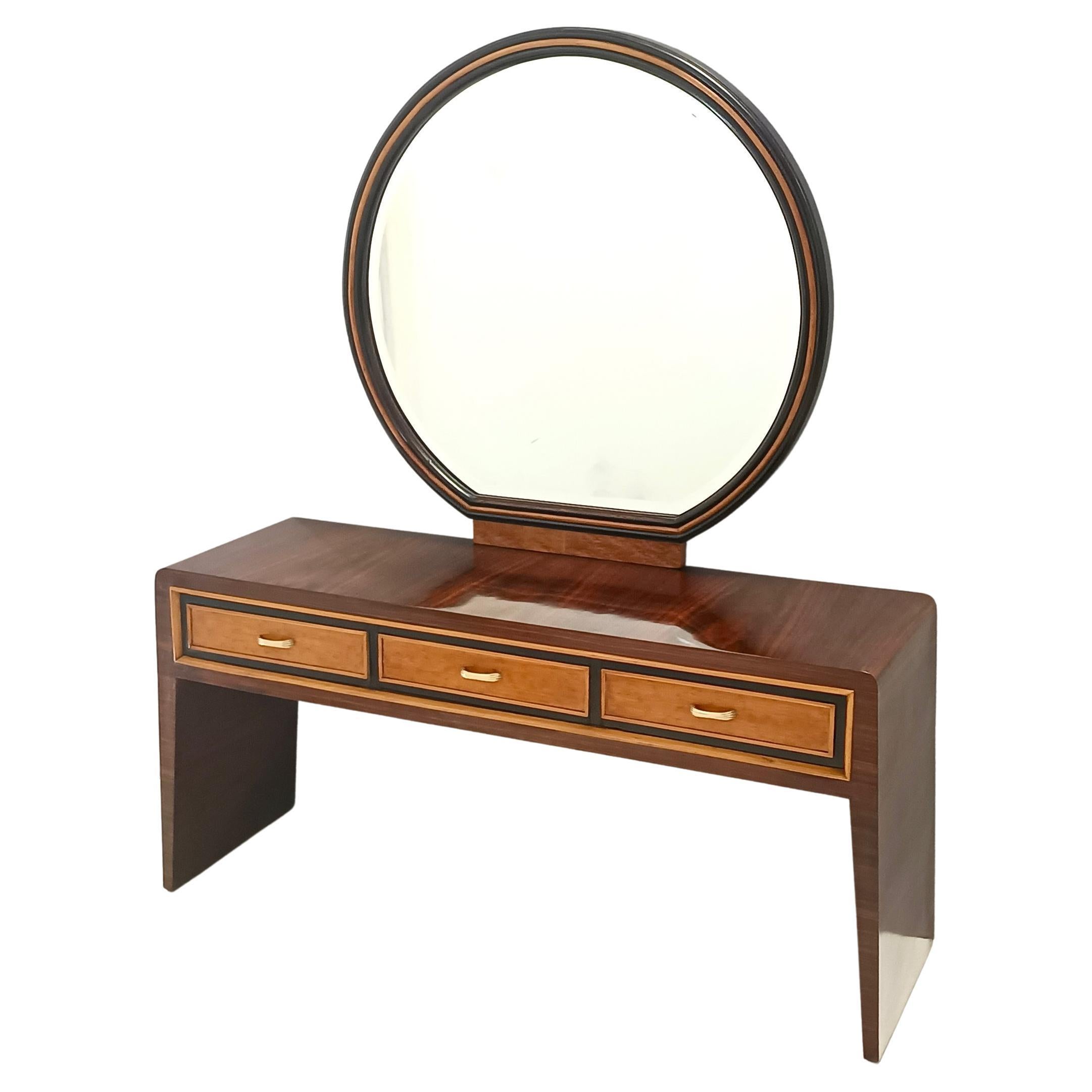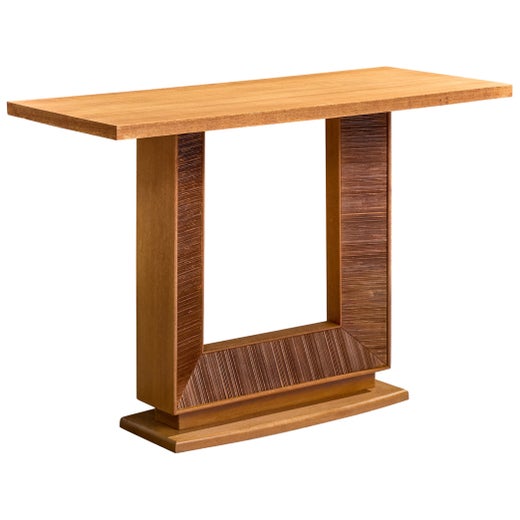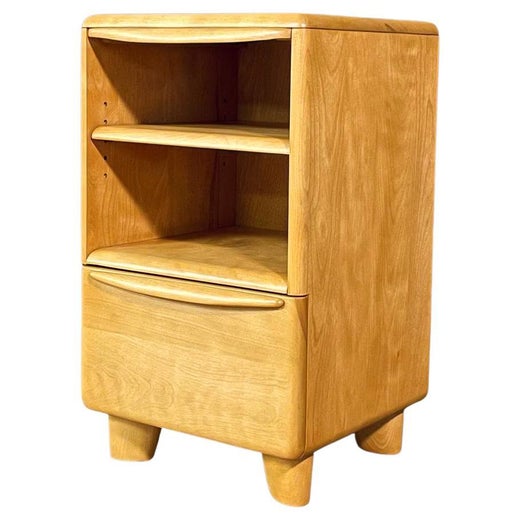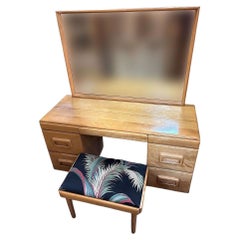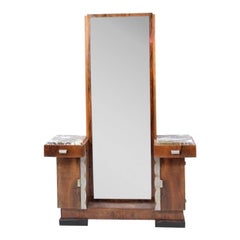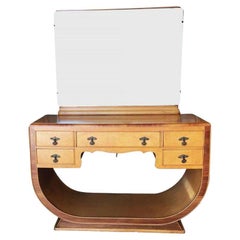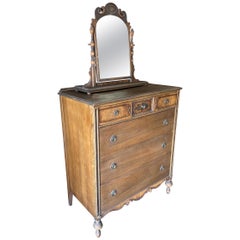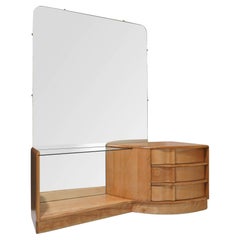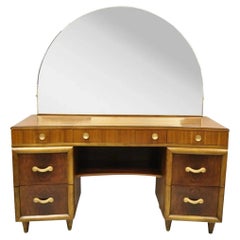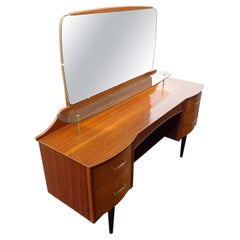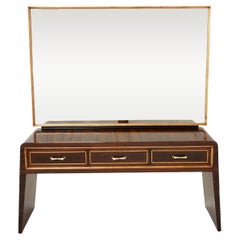Early Mid-century Combed Wood Vanity by Paul Frankl for Brown Saltman w/ Mirror
About the Item
- Creator:Paul Frankl (Designer),Heywood-Wakefield Co. (Maker)
- Dimensions:Height: 68 in (172.72 cm)Width: 62 in (157.48 cm)Depth: 20 in (50.8 cm)
- Style:Mid-Century Modern (Of the Period)
- Materials and Techniques:
- Place of Origin:
- Period:
- Date of Manufacture:1940
- Condition:Additions or alterations made to the original: Wood Restored. Restored to original condition.
- Seller Location:Van Nuys, CA
- Reference Number:Seller: 20N00109a1stDibs: LU947443282962
Paul Frankl
Born in Vienna, Paul Frankl came to the United States in 1914 as part of a wave of Central European design luminaries — among them Kem Weber, Rudolph Schindler, and Richard Neutra — who were drawn by the energy and optimism of the American scene. Prolific and protean, Frankl would go on to design furnishings that are emblematic of nearly every key stylistic chord in American modernism, from the streamlined Art Deco to free-form organic shapes.
Frankl's Skyscraper cabinets, bookcases and more — introduced in 1924 — are his earliest and best-known designs (and the work by which he is most often represented in institutions, such as New York’s Metropolitan Museum of Art). Tall and narrow, the pieces have staggered shelves meant to mimic the setbacks of Manhattan office towers. A later visually expressive line — the Speed chairs and sofas, which have a raked profile suggesting motion — links Frankl to Donald Deskey, Raymond Loewy and other creators of Streamline Moderne design.
Frankl moved to Los Angeles in 1934 and luxuriated in the climate and lifestyle. His designs became lighter and simpler and found an audience among the Hollywood élite. (Katharine Hepburn, Cary Grant and Fred Astaire were clients.) Fascinated by Asian arts, Frankl produced numerous pieces — tabletops with edges that curve upward; sofas, chairs and other seating with rattan frames — inspired by Chinese and Japanese forms and materials. In the 1940s, Frankl became one of the first designers to incorporate free-form, biomorphic shapes in his work, as well as novel upholstery fabrics such as denim and nubby wool.
Frankl biographer Christopher Long argues that the designer’s easy, elegant aesthetic had an enormous influence on movie set design. As the furniture below attests, Paul Frankl’s work is ready for its close-up.
Find vintage Paul Frankl tables, dining chairs, case pieces and storage cabinets on 1stDibs.
Heywood-Wakefield Co.
Created by the 19th-century merger of two venerable Massachusetts furniture makers, Heywood-Wakefield was one of the largest and most successful companies of its kind in the United States. In its early decades, the firm thrived by crafting affordable and hugely popular wicker pieces in traditional and historical styles. In the midst of the Great Depression, however, Heywood-Wakefield reinvented itself, creating instead the first modernist furniture — chairs, tables, dressers and more — to be widely embraced in American households.
The Heywoods were five brothers from Gardner, Massachusetts, who in 1826 started a business making wooden chairs and tables in their family shed. As their company grew, they moved into the manufacture of furniture with steam-bent wood frames and cane or wicker seats, backs and sides.
In 1897, the Heywoods joined forces with a local rival, the Wakefield Rattan Company, whose founder, Cyrus Wakefield, got his start on the Boston docks buying up lots of discarded rattan, which was used as cushioning material in the holds of cargo ships, and transforming it into furnishings. The conglomerate initially did well with both early American style and woven pieces, but taste began to change at the turn of the 20th century and wicker furniture fell out of fashion.
In 1930, Heywood-Wakefield brought in designer Gilbert Rohde, a champion of the Art Deco style. Before departing in 1932 to lead Herman Miller — the prolific Michigan manufacturer that helped transform the American home and office — Rohde created well-received sleek, bentwood chairs for Heywood-Wakefield and gave its colonial pieces a touch of Art Deco flair.
Committed to the new style, Heywood-Wakefield commissioned work from an assortment of like-minded designers, including Alfons Bach, W. Joseph Carr, Leo Jiranek and Count Alexis de Sakhnoffsky, a Russian nobleman who had made his name in Europe creating elegant automotive body designs.
In 1936, the company introduced its “Streamline Modern” group of furnishings, presenting a look that would define the company’s wares for another 30 years. The buoyantly bright, blond wood — maple initially, later birch — came in finishes such as amber “wheat” and pink-tinted “champagne.” The forms of the pieces, at once light and substantial, with softly contoured edges and little adornment beyond artful drawer pulls and knobs, were featured in lines with names such as “Sculptura,” “Crescendo” and “Coronet.” It was forward-looking, optimistic and built to last — a draw for middle-class buyers in the Baby Boom years.
By the 1960s, Heywood-Wakefield began to be seen as “your parents’ furniture.” The last of the Modern line came out in 1966; the company went bankrupt in 1981. The truly sturdy pieces have weathered the intervening years well, having found a new audience for their blithe and happy sophistication.
Find vintage Heywood-Wakefield desks, vanities, tables and other furniture for sale on 1stDibs.
- ShippingRetrieving quote...Shipping from: Van Nuys, CA
- Return Policy
More From This Seller
View AllVintage 1930s American Mid-Century Modern Vanities
Maple
Vintage 1930s American Art Deco Vanities
Palisander
Vintage 1930s French Art Deco Vanities
Glass, Hardwood
Vintage 1930s American Commodes and Chests of Drawers
Wood
Vintage 1930s British Art Deco Bedroom Sets
Wood
Vintage 1940s American Bedroom Sets
Rattan
You May Also Like
Mid-20th Century American Mid-Century Modern Vanities
Cut Glass, Mirror, Maple
Mid-20th Century Unknown Mid-Century Modern Vanities
Mirror, Walnut
Mid-20th Century British Mid-Century Modern Dressers
Teak
Vintage 1940s Italian Mid-Century Modern Vanities
Brass
20th Century Danish Scandinavian Modern Vanities
Mahogany
Vintage 1950s Italian Mid-Century Modern Vanities
Brass
